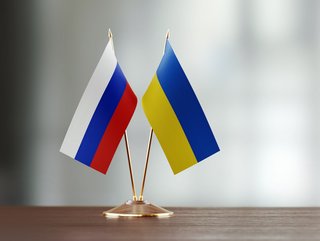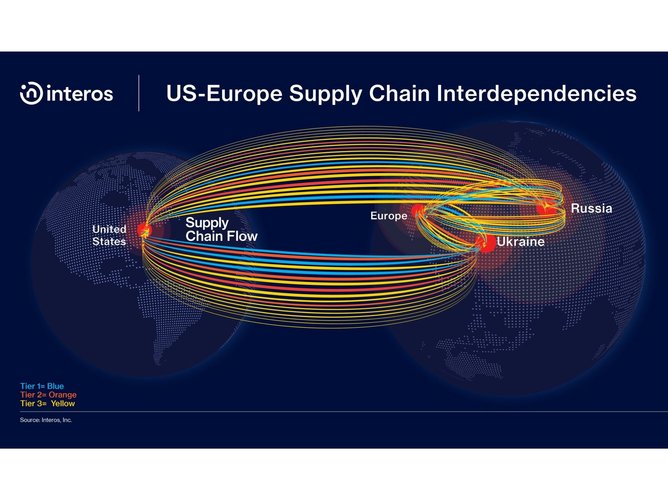Could a Russia-Ukraine conflict affect procurement & supply?

Tensions between Russia and Ukraine stem back to 1991 when Ukraine gained independence with its separation from the Soviet Union. It is this coupled with its ties to the West and its ambitions to join NATO - the North Atlantic Treaty Organisation, a guarantee of freedom and security for its members through political and military - that has President Putin wanting to regain control of former territories.
With Russia claiming that Ukraine joining NATO would be a threat to national security, and its increased military and violence build-up since March 2021, Russia has been accused by other European countries of attempting to restore the Soviet Empire, attempting to overthrow the Ukraine government, and pursuing aggressive militaristic policies.
Today, Ukraine is seeking to increase its defence along its borders with Russia, while Russia has deployed 125,000 troops close to Ukraine's border, reportedly 70% of the capability needed for a full-scale invasion.
Why could a Russia-Ukraine invasion affect procurement and supply?
According to the latest statistics from operational resilience company, Interos, thousands of US and European companies do business with Russian and Ukrainian suppliers, which could be a risk during military conflict.
The latest figures indicated:
More than 1,100 US-based companies and 1,300 European-based companies have at least one direct (Tier 1) supplier in Russia.
More than 400 companies in the US and Europe have a Tier 1 supplier in Ukraine.
Tier 1 software and IT services accounted for 12% of supplier relationships; 9% for trading and distribution; and 6% for oil and gas.
More than 5,000 companies in the US and Europe have Russian or Ukrainian suppliers at Tier 3 and more than 1,000 companies have Tier 2 suppliers in Ukraine.
Commenting on the global dependence on Russia and Ukraine, Interos said: “Supply chain and information security leaders in U.S. and European organizations should review their dependence on Russian and Ukrainian suppliers at multiple tiers. This is a key first step in assessing risk exposure in the region and ensuring operational resilience.”

Four major procurement and supply risks
Price increases
As tension accelerates, Interos predicts that energy, raw materials and agricultural markets will all face uncertainty.
Currently, Russia provides more than a third of the European Union’s (EU) natural gas. Threats to the supply could increases prices further than they already are, which could also have a knock-on effect for other energy markets.
“By one estimate, an invasion could send oil prices spiralling toUS$150 a barrel, lowering global GDP growth by close to 1% and doubling inflation. Even lower estimates of US$100 a barrel would cause input costs and consumer prices to soar,” commented Interos.
With Ukraine on track to be the world’s third-largest exporter of corn, and a top exporter of barley and rye, as well as Russia, being the top wheat exporter, food inflation could be another risk to supply chains. This could be significant for those with suppliers in Ukraine should Russia seize core agricultural areas.
The metal industry could also face the brunt of it, with Russia controlling 10% of global copper reserves. The country is also a significant producer of nickel and platinum.
Exports
Another exacerbation for the rise in costs could come from US and European export controls. In the last few years, restrictions on companies or products have increased. While they have been predominantly aimed at China, Multiple Russian companies have been earmarked for “acting contrary to the national security or foreign policy interests of the United States.”
Cybersecurity
Ukraine is familiar with Russian cyberattacks, twice the countries electric grid has been affected by Russia (December 2015 and 2016). While detrimental to the country itself, attacks on Ukraine’s infrastructure could cause significant damage to global supply chains.
In 2017, NotPetya’s attack on Ukraine tac report software disrupted ports, shut down manufacturing plants, and impacted government agencies. “The Federal Reserve Bank of New York estimated that victims of the attack, including Maersk, Merck and FedEx, lost a combined $7.3 billion,” said Interos.
Geopolitical instability
With it being unlikely that cyber warfare would remain within Ukraine’s borders, Interos emphasises the destabilising effects an invasion from Russia could have on the rest of the world.
“In Europe, a refugee crisis could emerge, with three to five million refugees seeking safety from the conflict. In Africa and Asia, rising food prices could fuel popular uprisings. Of the 14 countries that rely on Ukraine for more than 10% of their wheat imports, the majority already face food insecurity and political instability,” commented Interos.
Could a Russian invasion of Ukraine spark a trend?
“China is watching closely to see how the world responds if Russia invades Ukraine,” commented Interos.
A Russian invasion could spark China to enlist military tactics against Taiwan which would result in further disruption to global procurement and supply, in particular, the electronics supply chain.






